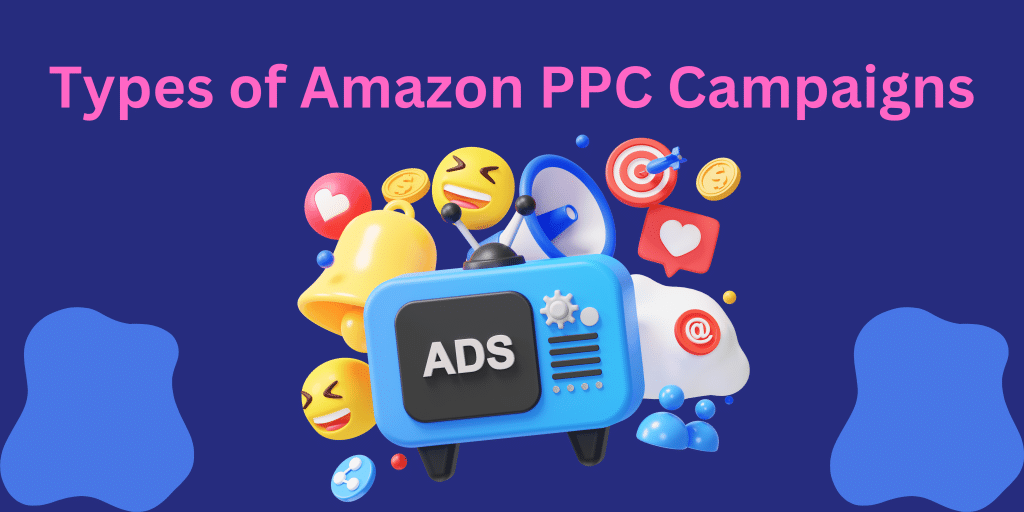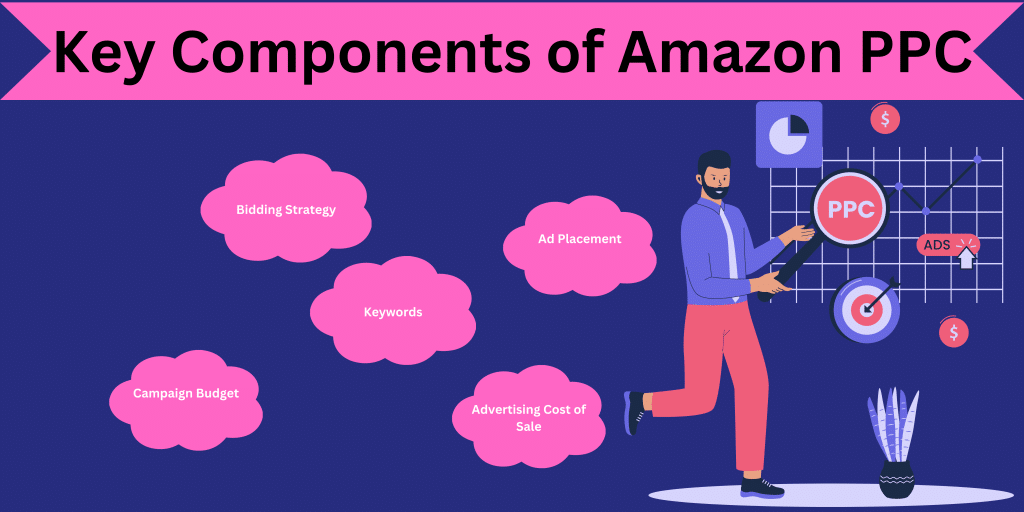Amazon Pay-Per-Click (PPC) advertising is one of the most effective ways for sellers to increase visibility and drive traffic and sales on Amazon. Every day, while millions of customers browse the platform, your products need to appear in the right place at the right time to be successful. But how does Amazon PPC work? In this comprehensive guide, we’ll break down everything you need to know about Amazon PPC and how you can use it to grow your business.
What is Amazon PPC?
Amazon PPC is the paid advertising by sellers to promote their products on Amazon’s search results page and product detail page. There are differences between PPC ads promoted through a paid strategy versus organic listings, which come down to a product’s relevance and SEO optimization. That’s why it’s called “Pay Per Click” — sellers are only charged when a shopper clicks on their ad.
Amazon PPC is a series of campaigns, each targeting a different type of customer at a different stage of their buying journey. These campaigns help sellers increase product visibility, attract more buyers, and ultimately increase sales.
Types of Amazon PPC Campaigns

There are three main types of Amazon PPC campaigns: Sponsored Products, Sponsored Brands, and Sponsored Displays.
1. Sponsored Products
Sponsored products ads are the most common form of Amazon PPC ads. These ads promote individual products and are displayed on Amazon’s search results and product pages. Sponsored products ads are usually labeled as “Sponsored” and appear alongside organic results, making them easy for customers to spot. This ad format is particularly effective for driving sales and improving product visibility.
How it Works:
- You choose a product to advertise.
- You set a budget and bid for relevant keywords.
- When a customer searches for those keywords, your ad may appear.
- You pay only when someone clicks on your ad.
2. Sponsored Brands
Sponsored brands ads let you promote your brand and up to three products at once. These are the ads that show up at the top of Amazon’s search results with a custom headline, logo, and up to three products. Sponsored brands ads are great for brand awareness, driving traffic to your storefront, and promoting a variety of products at the same time. You can create a branded ad with your logo, headline, and a few products.
3. Sponsored Display
Targeted display ads that can appear on and off Amazon are called “sponsored display” ads. These ads are shown to users who certain patterns with shopping or through their interests, or even have had contact with your brand in the past. Retargeting customers who have shown interest in your products but haven’t made a purchase is a great fit for sponsored display ads. You target with ads specific to audience segments. Amazon’s platform shows ads, and third-party websites or apps show ads.
Key Components of Amazon PPC

Amazon PPC is not all about setting up an ad and letting it run. There are many key components and metrics you need to know when running a campaign successfully.
1. Keywords
Keywords are the foundation for any PPC campaign. These are the search terms that customers use when they are searching for products. For example, if you sell a yoga mat, you might want keywords like “yoga mat,” “exercise mat,” “non-slip yoga mat,” etc.
2. Bidding Strategy
Amazon PPC is where you bid on how much you’re willing to pay each time a customer clicks on your ad. This is known as your Cost Per Click (CPC) bid. The more you spend on your ads overall, the more likely your ads will be in prime positions and the higher your bids.
3. Campaign Budget
You can set a daily or lifetime budget for each campaign. Daily budget is the maximum amount you’re willing to spend each day on ads, and lifetime budget is the set amount you’re willing to spend during the entire duration of the campaign.
4. Ad Placement
Amazon has different ad placements, such as search results pages, product detail pages, and even off-site placements. You can decide where you want your ads to show. For example, if you’re running a sponsored products campaign, your ad could appear on the first page of search results or on a competitor’s product detail page.
5. Advertising Cost of Sale (ACoS)
When running Amazon PPC campaigns, ACoS is a metric you need to be monitoring. It is the ad spend-to-revenue generated from that ad. Take ad spend, for example; if we spent $100 on ads and sales from those ads were $500, then your ACoS would be 20%. The aim is to have a good ROI but keep your ACoS low.
Optimizing Your Amazon PPC Campaigns: How To Do It
Optimizing Amazon PPC campaigns is a never-ending process.
Here are some tips for improving your campaigns over time:
1.Refine Your Keyword List
Negative Keywords: Negative keywords help you prevent your ads from showing irrelevant search terms. This helps to prevent wasted spend and improve your targeting.
Long-Tail Keywords: Also, add long-tail keywords with lower competition; hence, you can have targeted traffic.
2. Monitor Campaign Performance
Check your campaign metrics (ACoS and conversion rate most important, CTR if you want to see if you can pull more clicks from ad groups that aren’t testing), and areas that hold the most need are ripe for improvement. If you aren’t getting the results you want from certain keywords or ads, adjust your bids, or tweak your ad copy.
3.Test Different Ad Copy and Images
If you’re running sponsored brands or sponsored display ads, test different variations of the headlines, images, and products to find what works best for your audience.
4. Optimizing Your Product Listings
Ensure all your product listings are optimized both for SEO and conversions. Having high-quality images, good product descriptions, and positive reviews will help improve your ad performance and boost your sales.






